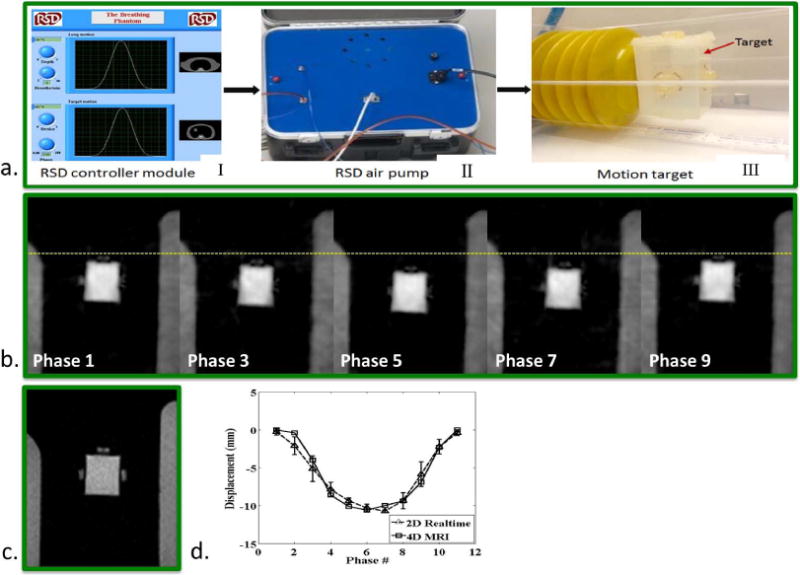Figure 4.

Phantom study. a) A commercial Dynamic Breathing Phantom system placed outside the MR scanner room (I) was used to produce simulation signals mimicking human respiratory motion. Through an air pump (II) and tube, the signals were used to drive a box filled by gadolinium-doped water, which served as an imaging target (III). During the scan, the box executed reciprocating motion along the z-axis of the magnet at a frequency of 18 cycles/min, giving a set of phase resolved images (phase 1, 3, …, 9) reformatted from 4D-MRI, where the dashed line is drawn for a better visualization of the target motion at each respiratory phase (b). (c) A single frame of the real-time 2D-MRI image series. d) Measured SI displacement series, comparing between 4D-MRI and real-time 2D-MRI at each respiratory phase.
